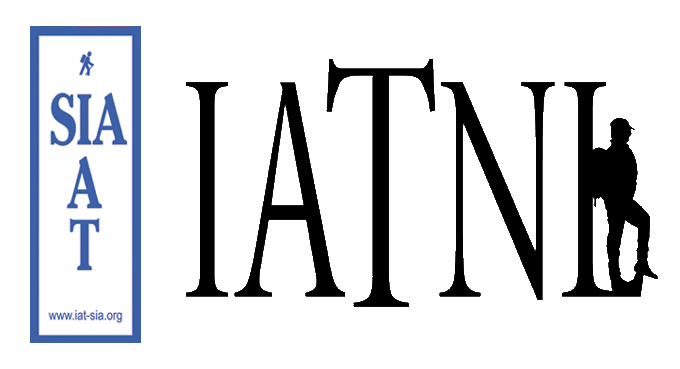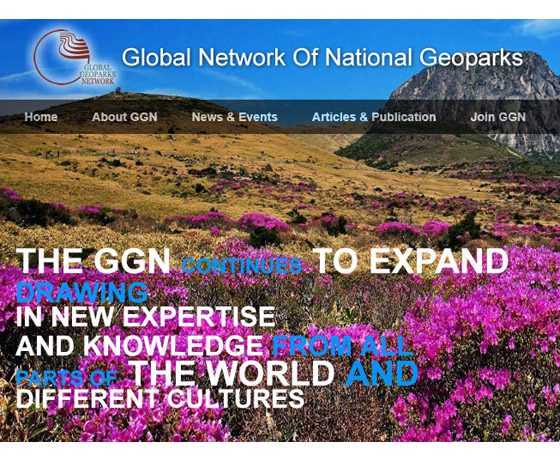The International Appalachian Trail Newfoundland & Labrador has taken a page from the IAT Europe playbook with plans to establish a Global Geopark, spanning the Bay of Islands Ophiolites from Lewis Hills to Gros Morne National Park. Other stakeholders include Western Newfoundland Destination Management Organization (Go Western), Corner Brook Pulp & Paper Ltd, and all towns in the Bay of Islands and western side of Gros Morne National Park.

But what you ask is a Global Geopark? It is an area recognized by the UNESCO supported Global Network of National Geoparks to have exceptional geological heritage. This simply means that the area has a natural landscape that is good for education, has a significant scientific value, is particularly rare, or is simply beautiful to look at. But Geoparks aren’t just about geology. They also take in sites with interesting history and archaeology, wildlife and habitats, folklore and culture, all of which are intricately linked with the underlying geology.

European Geoparks are members of the Global Network of National Geoparks, also known as the Global Geoparks Network. The GGN provides a platform for cooperation and exchange between experts and practitioners in geological heritage, and its promotion. Under the umbrella of UNESCO, and through cooperation with the global network partners, important local and national geological sites gain worldwide recognition and benefit from the exchange of knowledge and expertise with staff of other Geoparks.

UNESCO and the GGN develop models of best practice and set quality standards for territories that integrate the preservation of geological heritage into strategies for regional sustainable economic development. The establishment of a Geopark aims to bring sustainability and real economic benefit to the local populations, usually through the development of sustainable tourism and other economic and cultural activities.

In Europe, the International Appalachian Trail traverses 8 Geoparks, including North West Highlands and Lochaber Geoparks in Scotland, North Pennines and English Riviera Geoparks in England, Geo Mon and Forest Fawr Geoparks in Wales, Villuercas Ibores Jara Geopark in Spain, and Naturtejo Geopark in Portugal.

In Western Newfoundland, the proposed Geopark will span the “Bay of Islands Ophiolites,” from Lewis Hills to Gros Morne National Park. These large tectonic mesas form a series of ophiolite complexes of mafic and ultramafic rock high in magnesium and iron. The mafic are composed largely of gabbro and derive from the earth’s oceanic crust, while the ultramafic are composed mostly of peridotite, and come from the earth’s mantle below. Both heaved to the surface during tectonic collisions 100’s of millions of years ago, and are some of the best examples on the planet.
 2s.jpg)
As described in Beyond Ktaadn’s new Eastern Alpine Guide, “these mountains support tens of thousands of hectares of boreal, subalpine, alpine, and serpentine wilderness and are unique because they are derived from mantle, the hot, metal-rich sludge that forms the majority of the Earth’s insides. In the Lewis Hills, for example, rocks may be observed that represent the boundary between oceanic crust and mantle, which typically occurs 10 km (6 mi) below the surface.

Among geologists, the Bay of Islands region is known worldwide for the incredible, sprawling serpentine barrens. Furthermore, these mountains contain what is known as the best-preserved ophiolites on earth. Extensive exposures of serpentine give the mountains a distinctive, moonscape appearance. … Serpentine outcrops rarely occur in the form of massive alpine mountain ranges, as they do here.

As described by Parks Canada, the rocks of Gros Morne National Park and adjacent parts of western Newfoundland are world-renowned for the light they shed on the geological evolution of ancient mountain belts. The geology … illustrates the concept of plate tectonics, one of the most important ideas in modern science. This is one of the main reasons why Gros Morne National Park has been designated a World Heritage Site by UNESCO (the United Nations Education, Scientific and Cultural Organization).

Around 1,200 million years ago, in the Precambrian era, the ancient core of what is now eastern North America collided slowly with another continent to form a vast mountain range. All that remains today are the deeply eroded granites and gneisses of the Long Range Mountains. In late Precambrian time, the supercontinent began to break apart. By 570 million years ago the continent finally rifted apart, and the resulting basin became an ocean called the Iapetus Ocean. Some of the rocks of Western Newfoundland were part of the continental margin on the western side of this new ocean, south of the Equator.

About 500 million years ago the Iapetus Ocean began to close along a subduction zone far to the east. There, the edge of one oceanic plate was drawn down beneath another. Some of this oceanic crust became trapped within the subduction zone where it was deformed and metamorphosed. As the Iapetus Ocean closed, new oceanic crust developed when magma from the Earth’s mantle welled upwards to form peridotite and dunite followed by gabbro. The transitional contact zone between them represents the base of the ancient ocean crust. Western Newfoundland is one of the few places on Earth where this boundary, the Mohorovicic Discontinuity, and the upper mantle can be studied directly.

Above the crust-mantle boundary are several layers of oceanic crust. The lowermost layer is gabbro, but not all of the molten rock cooled into gabbro. Some was forced upward where it filled steep, parallel cracks and became “sheeted dykes” of diabase and fed lava flows that cooled on the ocean floor as pillow basalt. Although these dykes are similar in composition to those that cut the Precambrian rocks, they are much younger. Together this sequence of peridotite, gabbro, sheeted dykes, and pillow basalt is known as an ophiolite, and represents a complete slice of the Iapetus sea-floor. As subduction continued, the Iapetus Ocean finally closed around 475 million years ago. Some of the still-hot ophiolite was shoved on top of the down-going crustal slab, incorporating with it pieces of fresh sea-floor lava. The ophiolite slab was then thrust slowly over the continental margin.

As described by UNESCO, the Bay of Island’s Ophiolites “provide a rare example of the process of continental drift, where deep ocean crust and the rocks of the earth’s mantle lie exposed.” They illustrate “some of the world’s best examples of the process of plate tectonics. Within a relatively small area are classic, textbook examples of monumental earth-building and modifying forces that are unique in terms of their clarity, expression, and ease of access. The property presents the complete portrayal of the geological events that took place when the ancient continental margin of North America was modified by plate movement by emplacement of a large, relocated portion of oceanic crust and ocean floor sediments.” The rocks “collectively present an internationally significant illustration of the process of continental drift along the eastern coast of North America and contribute greatly to the body of knowledge and understanding of plate tectonics and the geological evolution of ancient mountain belts. In glacier-scoured highlands and spectacular fjords, glaciation has made visible the … many geological features.”

The proposed Geopark will also promote the region’s rich maritime heritage, including early explorers Jacques Cartier – whose first voyage of discovery in 1534 included the coast of Western Newfoundland (later to become a part of the French Shore)

and James Cook, who explored the coastline in 1767 after being appointed by the Royal Society of London to explore the Pacific Ocean in 1768.

Cook’s Newfoundland charts were published between 1765 and 1768, and marked a new standard in British hydrographic surveys. They were not superseded by more detailed surveys for over a century.
From September 19-22, the Cabox Global Geopark project will be represented at the 6th International UNESCO Conference on Global Geoparks held at Stonehammer Geopark in New Brunswick, where the below poster was approved for presentation (click to enlarge).
Stay tuned for more on the proposed Cabox Global Geopark.





